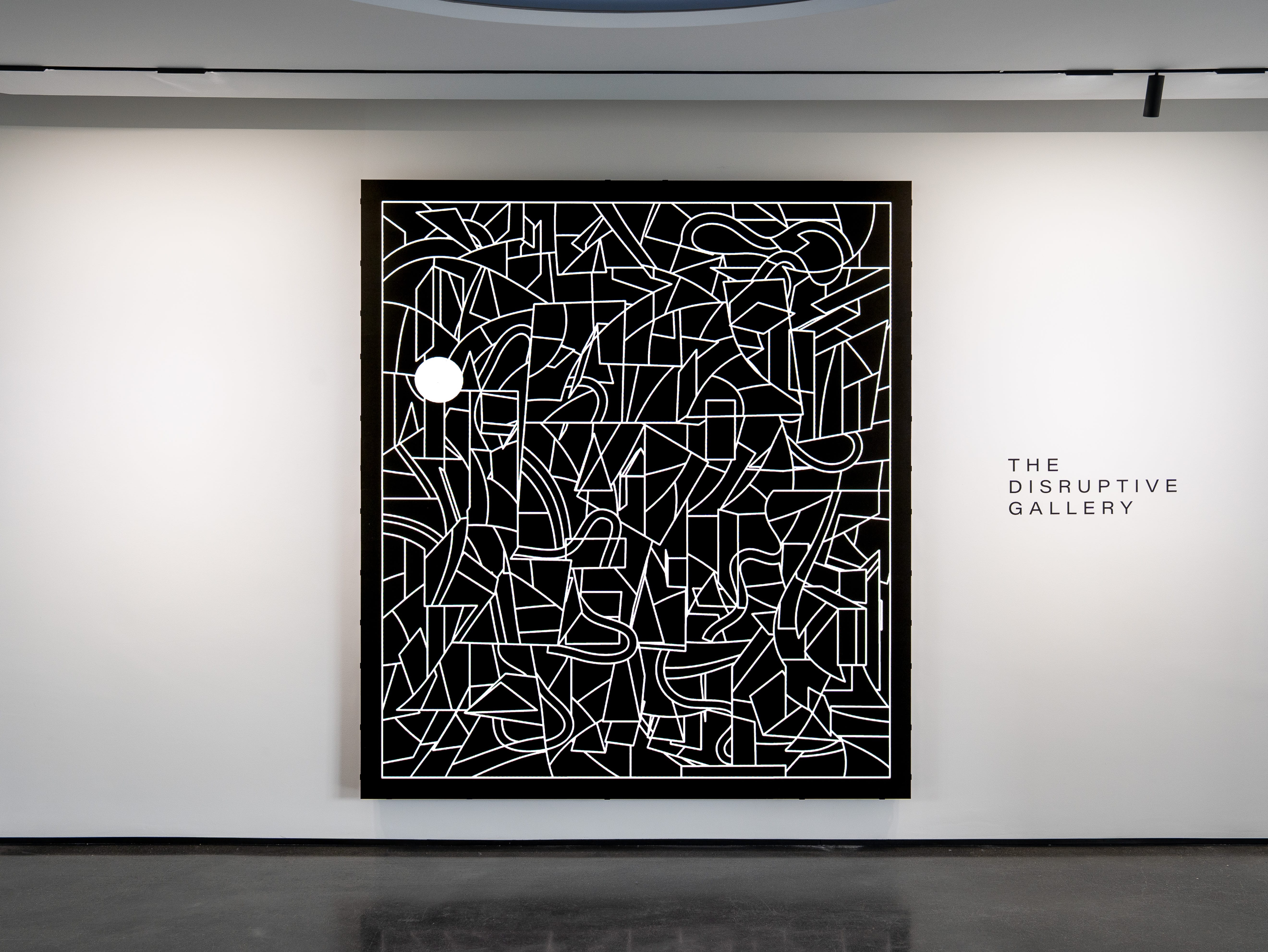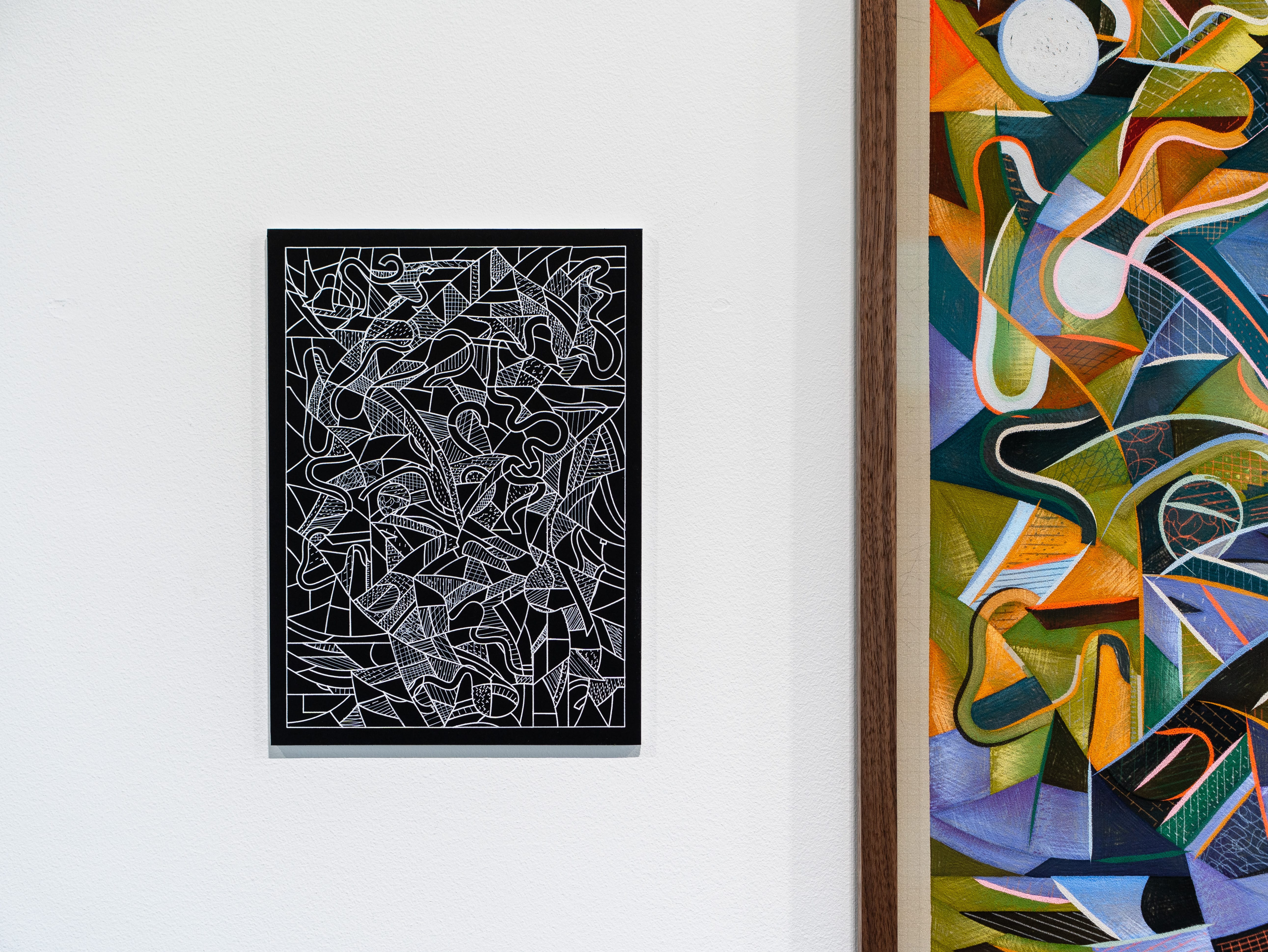Materialistic
Released - May 2025 with The Disruptive Gallery
Drawing a connection between early computer graphics & cubism
Behind the Work
Last updated - May 28th
Materialistic is a generative series of 92 works exploring surface, texture, and the boundaries of digital materiality.

The entrance to the gallery show - the foundation of the algorithm
The Story
Materialistic is an algorithm that examines a connection between the Cubist era and early computer graphics research, realised through a digital mark-making process.
Cubism & early computer graphics both aimed to represent a broader view into our world than can be seen from a single perspective. Both defined formal systems and procedures to achieve this.
Amazingly, they’re separated in history by only a handful of years. At the tail-end of Cubism, many of its rules, procedures and mathematical ideals began to be documented and shared amongst artists. This shifted it’s role to one of a codified system, with these principles becoming the language used by its creators.
less than 20 years later, early computer scientists were looking to achieve a very similar goal - To reconstruct and represent the world anew - objects that were once fixed, static, could now be rotated to reveal their multi-dimensionality, translated, rendered as wireframes, and assembled as representational structures - this echos many of the fundamental elements that cubists were exploring just a few years prior.
This connection just 20 years apart felt striking to me - both disciplines shared many similarities in their approach. Both aim to represent a broader view of the world than can be seen by the eye alone, and both define systems that codify their respective processes to achieve this. Could one have directly informed the other? It’s this thought that established the foundation of the Materialistic algorithm, and the piece grew from this intersection.

The print work with it’s plotted counterpart
The Approach
Tools - TypeScript, GLSL
Materialistic employs a mixture of systems, constraints and rules inspired by Cubist principles and early computer graphics research - reconstructing its output across multiple perspectives, deconstructed geometry and primitive objects.
At the entrance to the gallery space you’ll see these foundational elements of the algorithm at work - the above real-time, simplified version continuously reconstructs it’s output, resulting in multiple perspectives and abstracted forms as it’s focus shifts within the piece.
As an extension of the composition - Materialistic’s mark-making process embodies a re-construction of real world media - a ’virtual material’ if you will - inspired by pen, paint and ink - it shifts between aspects of these, forming a digital (and multi-dimensional) representation of pigment based media.
To create the detail present in the print-work - the algorithm bypasses the resolution and colour depth limitations in modern browsers. This allows any piece to be progressively rendered at any resolution, with significantly higher colour depth and gamut than would otherwise be possible.
Each of the curated works comes with a companion plotted representation of the underlying data structure - output from the algorithm during the piece’s generation. These plots form a contrast with their parent print work - feeling more digital than the digital prints themselves, despite being made with real-world physical media, furthering the concept of reconstruction, and challenging the material elements within the piece.
My hope with this piece is that it can open some questions to you on the nature of modern digital reconstruction - our progress toward reconstructing the world around us in a digital form, either literal, or conceptual.